Masterpiece Story: Wheatfield with Cypresses by Vincent van Gogh
Wheatfield with Cypresses expresses the emotional intensity that has become the trademark of Vincent van Gogh’s signature style. Let’s delve...
James W Singer 17 November 2024
28 July 2024 min Read
On December 29th, 1888, John Singer Sargent went to the Lyceum Theatre in London to watch the premiere of Shakespeare’s Macbeth starring Henry Irving and Ellen Terry. He was blown away by Terry’s performance and was determined to paint her in costume. Read the story of Sargent’s masterpiece.
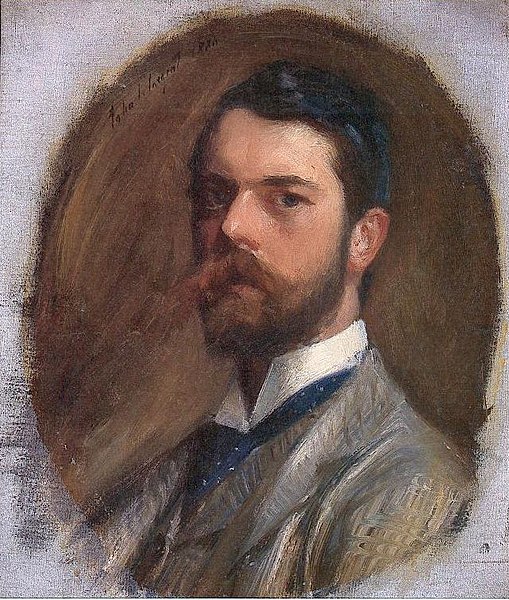
John Singer Sargent, Self-Portrait, 1886, Aberdeen Art Gallery, Aberdeen, UK.
Born in Florence, Italy, to American parents, John Singer Sargent (1856–1925) was an international artist who exhibited on both sides of the Atlantic. He trained in Paris and made his reputation there before coming to London in 1884, initially to escape the controversy surrounding his portrait of Madame X.
Sargent was a close friend of Impressionists like Claude Monet (1820–1926) and, like them, enjoyed painting plein-air landscapes, exploiting vigorous, sketchy brushstrokes. However, he was never interested in the same urban subjects and often worked on a much larger scale. Many of his early works, painted on travels in Italy and Spain, frequently using local street-sellers and children as sitters, were slightly sentimental genre pictures with a strong sense of mood.
Sargent quickly established a reputation and a lucrative business as a portraitist. He specialized in large Grand Manner representations of wealthy and influential society figures, particularly women, which combined energetically painted luxury fabrics with insightful character observations. He also regularly painted his friends, such as the writers Robert Louis Stevenson and Vernon Lee.
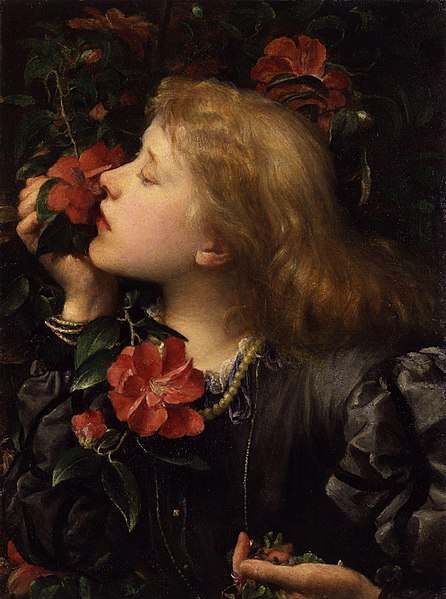
George Frederic Watts, Choosing (Ellen Terry), c. 1864, National Portrait Gallery, London, UK.
Ellen Terry (1847–1928) was one of the leading actors of the 19th century and a celebrity with a controversial love life. She was a noted member of artistic and aesthetic circles who began acting alongside her sister at age nine. She was almost a veteran when George Frederic Watts (1817–1904) painted their portraits in 1863.
Watts fell for her: they married a week before her seventeenth birthday despite an age gap of nearly thirty years. His portraits of her, like Choosing, emphasize her youth and innocence in a way that today seems almost predatory. In any case, the marriage was unsuccessful. Terry struggled to find acceptance amongst Watts’ intellectual and artistic friends, and they separated after only ten months.
She partnered with the architect and designer Edward William Godwin three years later. They had two children together in what was considered a scandalous, out-of-wedlock union before going their separate ways. In 1877, Terry married again to a fellow actor, but she divorced him after three years.
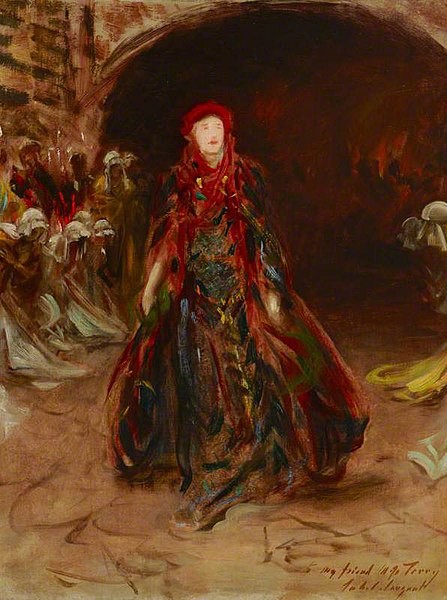
John Singer Sargent, A Sketch of Dame Ellen Terry as Lady Macbeth, c. 1889, National Trust, Smallhythe Place, UK.
The production of Macbeth that so captivated John Singer Sargent was one of many Shakespearean plays that Terry and actor-manager Henry Irving staged at the Lyceum Theatre in London. It was hugely successful, playing to sell-out crowds for six months before traveling to the United States.
Sargent originally intended to represent an actual scene from the play. An oil sketch depicts Terry as Lady Macbeth striding out of her husband’s castle to greet the arrival of the Scottish king, Duncan, with figures bowing around her and an architectural backdrop.
This plan was then scrapped in favor of a pose showing Terry dramatically raising the Scottish crown above her head. Despite not featuring in Shakespeare’s text or in the Lyceum production, the pose illustrates Lady Macbeth’s ambition and determination, which is one of the driving forces of the tragedy.
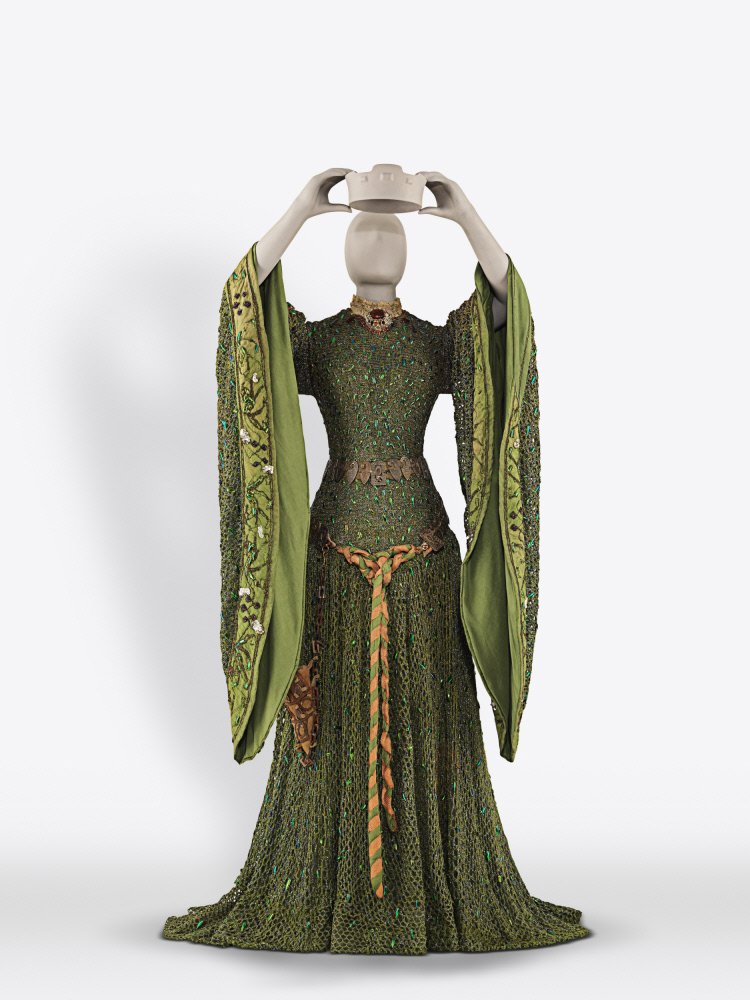
Alice Comyns Carr, Costume for Ellen Terry as Lady Macbeth, 1888, National Trust, Smallhythe Place, UK.
Most of the costumes for the 1888 production were designed by Charles Cattermole, but Ellen Terry had her own costume designer, Alice Comyns Carr, who worked with the actor for twenty years from 1882, along with her dressmaker, Adaline Nettleship.
The dress was made of emerald green silk and famously used over a thousand beetle-wing cases to create an iridescent effect that shimmered under the stage lights and was compared to the scales of a snake. The bodice was knitted and crocheted using wool and metallic thread to suggest “soft chain mail.” The dress was edged and accessorized with gold and paired with a purple velvet and embroidered cloak. It was designed to work alongside Terry’s wig of long, red hair plaited and braided with gold.
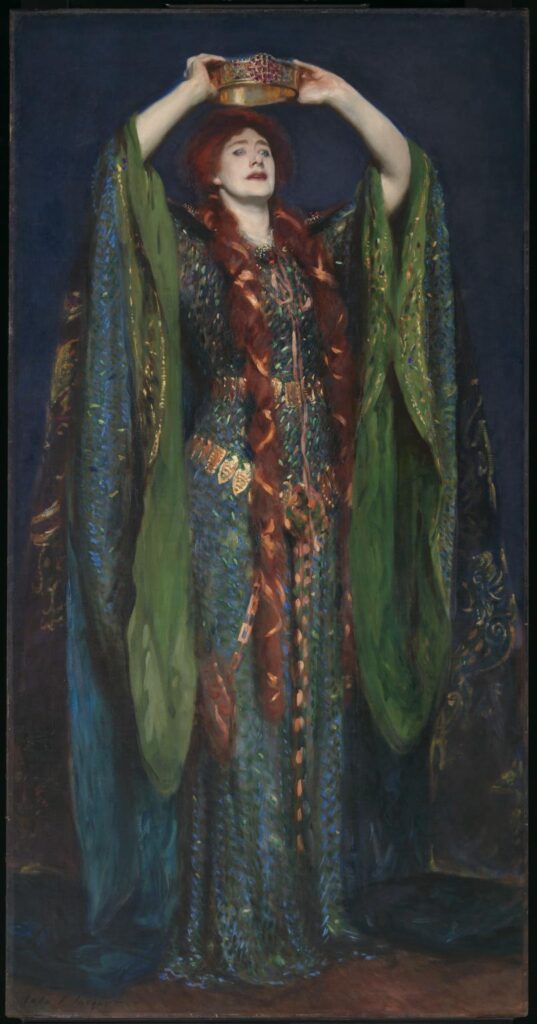
John Singer Sargent, Ellen Terry as Lady Macbeth, 1889, Tate Britain, London, UK.
In his painting, Sargent chose to make the dress more blue than green, apparently on the advice of Edward Burne-Jones (1833–1898), who visited his studio while the portrait was in progress. He also used a rich ultramarine for the background.
This increases the portrait’s Pre-Raphaelitism, exploiting the complementary color pairing of orange (the red hair) and blue. “The whole thing is Rossetti—rich stained-glass effects,” described Ellen Terry. Burne-Jones later designed costumes for an 1895 production of King Arthur in which Terry played Guinevere.
Terry’s face seems almost deathly white, slashed with the vivid, blood-red of her lips and wide, wild eyes. Sargent manages to suggest the murder she will help to commit and her later descent into madness. The sleeves of the dress become almost like rivulets of water running down from her arms, reflecting her obsession with trying to wash Duncan’s blood away.
Sargent also designed an elaborate gilt, Celtic-style frame for the painting, which would be in keeping with both the costume and the subject of the play.
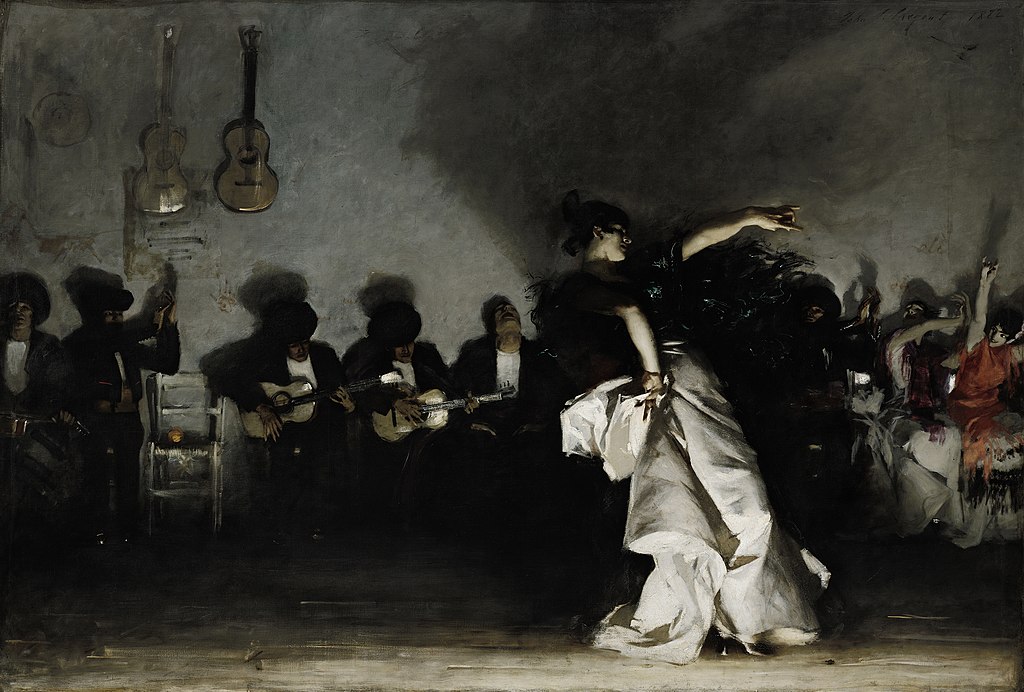
John Singer Sargent, El Jalou, 1882, Isabella Stewart Gardner Museum, Boston, MA, USA.
The Lady Macbeth portrait was not the only occasion that Sargent represented performers. Early in his career, he had painted groups of musicians and dancers in a highly impressionistic style, using blurred brushwork and unfocused compositions to suggest the excitement, sound, and drama of live performance.
El Jalou was inspired by an extended trip to Spain in 1879 and portrays a flamenco dancer and musicians on a vast, three-and-a-half-meter-wide canvas. The work was completed rapidly, but only after months of preparatory sketches. Sargent used an almost monochrome color scheme, deep shadows, and dramatic lighting to suggest the drama of the dance.
Sargent’s painting of the flamenco celebrity La Carmencita takes the Spanish dancer’s pose, costume, and character, as we see in El Jalou, but shows her in a static portrait. As with Ellen Terry, La Carmencita was the stage name of Carmen Doucet Moreno, a performer who impressed Sargent. He called her “a bewildering, superb creature” whom he persuaded to sit for him. However, there was some criticism that he had represented a music-hall performer on the same scale and grandeur as his society portraits.
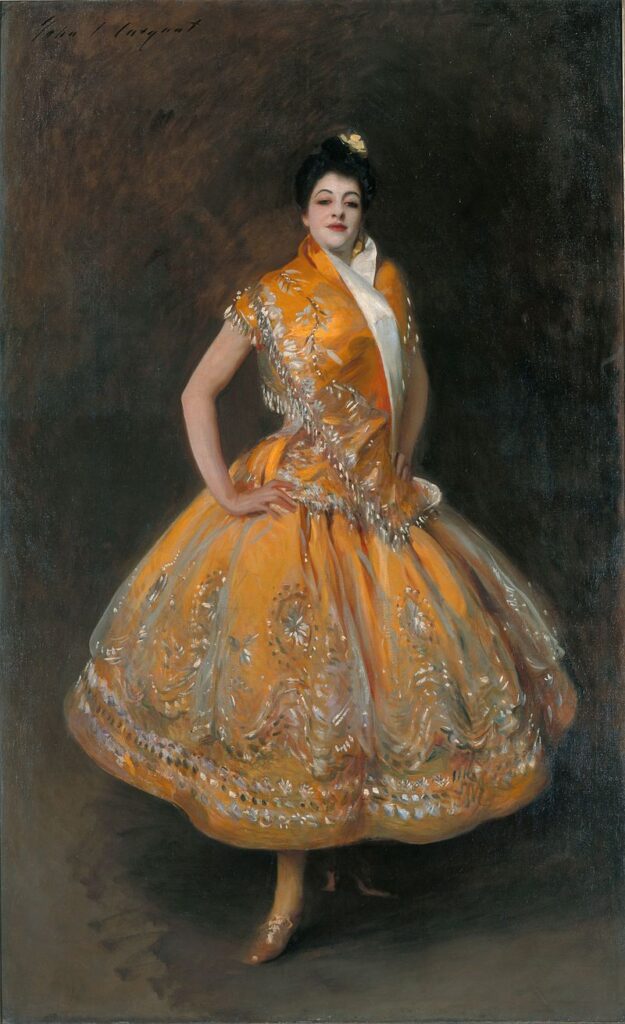
John Singer Sargent, La Carmencita, 1890, Musée d’Orsay, Paris, France.
Sargent’s portrait of Ellen Terry as Lady Macbeth arguably began as an act of fandom by a theatre-goer so wowed by a performance that he had to record it. It became a hugely successful piece of advertising, showcasing both Sargent’s gifts as a portraitist and Ellen Terry’s as an actor.
Henry Irving, also the play’s producer, bought the painting, which was hung in the Lyceum Theatre. It remains iconic because of Sargent’s skill, which encapsulates the essence of the role in a single static pose. Terry’s sense of strength and presence is created, revealing Sargent’s love of the theatrical.
DailyArt Magazine needs your support. Every contribution, however big or small, is very valuable for our future. Thanks to it, we will be able to sustain and grow the Magazine. Thank you for your help!